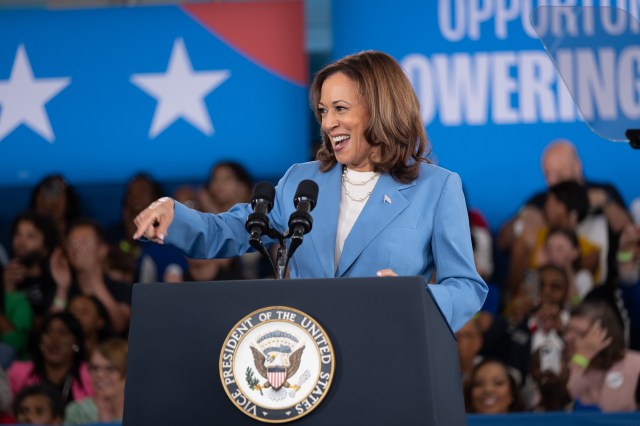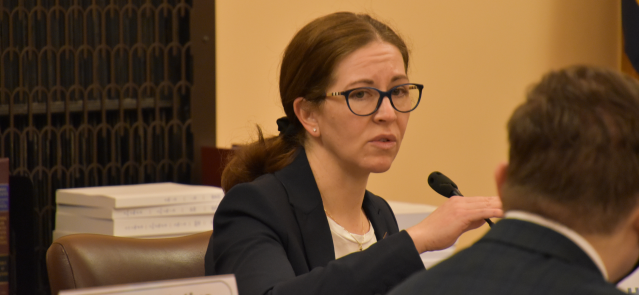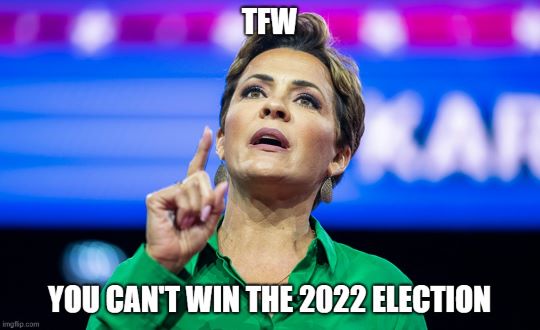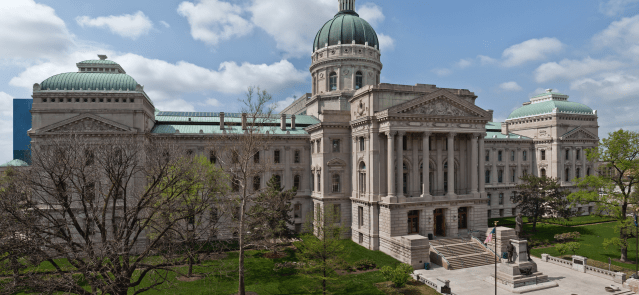Vice President Kamala Harris unveiled her first major economic policy speech as the Democratic candidate for President of the United States at the Hendrick Center for Automotive Excellence at Wake Technical Community College in Raleigh Friday.
Harris pitched an “Opportunity Economy” targeted at the middle class with a focus on reducing costs in order for Americans of all backgrounds and opportunity levels to succeed.
Among the proposals by Harris are a $25,000 down payment for first-time homebuyers, a pledge to build three million new homes, an expanded child tax credit and a vow to lower costs at the grocery store.
Prior to the 30-minute address by Harris, which marked her 16th trip to the Tarheel State during her vice-presidency, North Carolina Democratic leaders said the room had an Obama-level energy that hasn’t been felt in over a decade.
“I have that 2008 feeling,” Gov. Roy Cooper said, reminding the audience that also happened to be the last election North Carolina voted blue rather than red as a state.
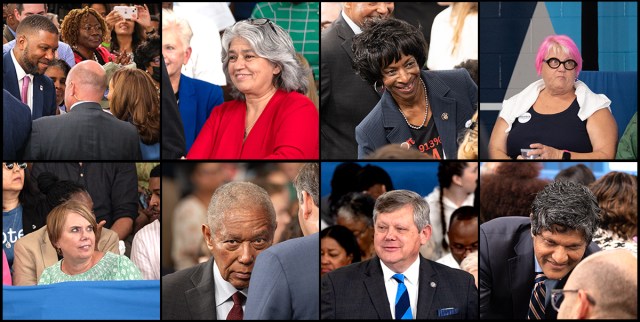
“Kamala has the energy, the pump,” Rep. Allison Dahle, D-Wake, said. “For me this is as exciting as when Obama ran. We have somebody who our young children can look up to and say, ‘I can be president someday.’”
Attorney General and Democratic candidate for Governor Josh Stein remarked that North Carolina is one of the fastest growing states in the entire country, but not everyone has a fair shot at success.
“….Our economic success is not being evenly shared,” Stein said. “Too many people are struggling to pay rent, buy groceries and afford medicine, and that’s to say nothing of an unexpected auto repair bill or medical expense.”
Harris began her address by crediting the 16 million new jobs that have been created after the COVID-19 pandemic, and noted that inflation is now below 3% as of this week. Harris said it’s a foundation that can be built upon.
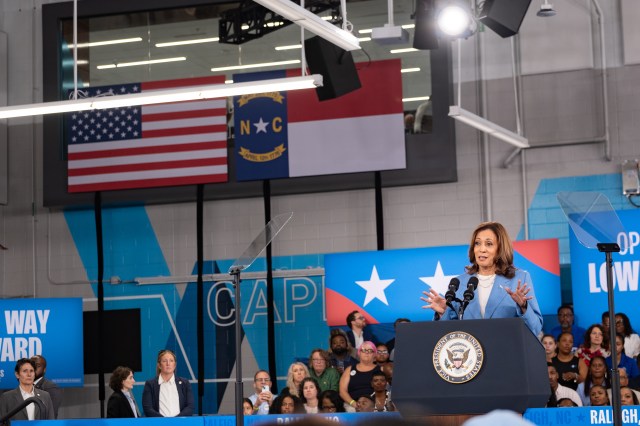
“Still, we know that many Americans don’t yet feel that progress in their daily lives,” shesaid. “Costs are still too high, and on a deeper level, there are too many people, no matter how much they work, it feels so hard to get ahead.”
Harris stated that it will be a “laser-focus” of her administration to create opportunities for the middle class to advance their economic security.
“Together we will build what I call an Opportunity Economy,” Harris said. “Where everyone can compete and have a real chance to succeed. Everyone, regardless of who they are or where they started, has an opportunity to build wealth for themselves and their children.”
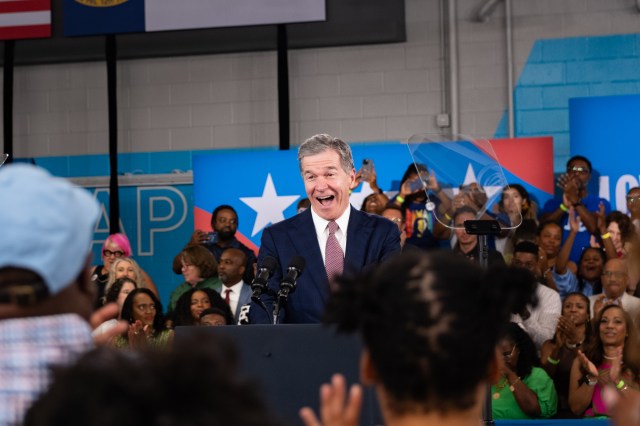
Leaning on her background as a former California Attorney General, Harris said that she fought against companies that illegally increased prices, especially for prescription drugs, and she will do the same as President.
“Many of the big food companies are seeing the highest profits in two decades, and while many grocery chains pass along these savings, others still aren’t,” Harris said.
A final proposal by Harris outlined a plan to build three million new homes by the end of her first term, with an assurance that the homes will go to citizens, not corporate investors. Aspiring homeowners can save for years and still not be able to afford a home, Harris said.
“In addition, while we work on the housing shortage, my administration will provide first-time homebuyers with $25,000 [in a down payment],” Harris said.
Toward the end of her address, Harris referenced Trump’s visit to Asheville earlier this week. Harris said he planned to discuss the economy at his rally, but offered no serious plans to reduce costs for middle-class families and was more focused on personal attacks.
“I think, for most of us, that was not surprising,” Harris said.
An organic chant of “We’re not going back” broke out toward the end of Harris’ address when she said a Donald Trump presidency would repeal the Affordable Care Act.
Sen. Sydney Batch, D-Wake, said many of the talking points paralleled bills that North Carolina lawmakers have filed, and that she loved the messaging behind an “Opportunity Economy.”
“I think that while we live in a world where the economy is actually getting much better, people don’t feel that,” Batch said. “We have to reassure them not only is the economy getting better, but we are actually putting things in place to make sure that we can lower costs.”
Batch said there has been a “kinetic energy” since Harris has succeeded Biden as the nominee and it was “wonderful to see in person.”
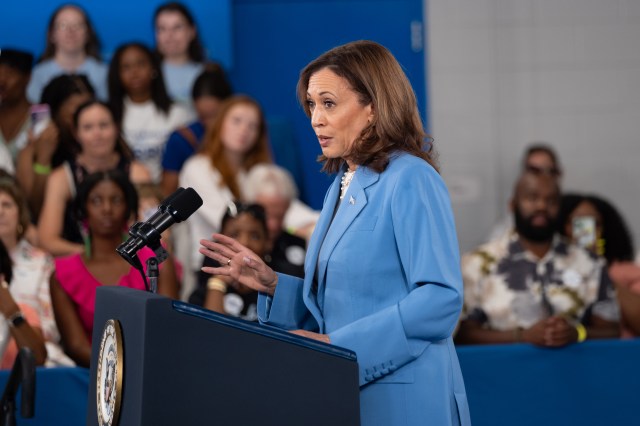
That’s a sentiment shared with Rep. Dahle, who said there has been a palpable, positive energy among those she’s interacted with since Harris has assumed the mantle as the Democratic nominee.
“We have a lot of recovery to do,” Dahle said. “Economically, agriculturally — we have so many things that we can do that should be feasible on both sides of the aisle.”
“I thought she had a really strong economic message that focuses on the cost of living issues confronted by middle class Americans,” Sen. Jay J. Chaudhuri, D-Wake, said. “Just as importantly, she drew a strong contrast with the policies of Donald Trump.”
Chaudhuri said when Democrats embrace the values that Harris spoke about, they will win at the polls.
“The speech reminded me of the way Bill Clinton communicated economic messaging in the ‘92 election,” Chaudhuri said. “I think the visual of a middle class American walking down the grocery aisle or paying bills at the kitchen table, those are really going to resonate, I think, with the voters.”
For questions or comments, or to pass along story ideas, please write to Matthew Sasser at [email protected] or contact the NC Insider at [email protected] or @StateAffairsNC
